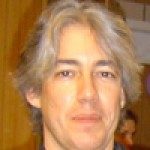Lien vers Pubmed [PMID] – 18792692
Adv. Exp. Med. Biol. 2008;631:214-28
In order to survive, bacteria have developed avariety of highly sophisticated and sensitive signal transduction pathways with which they adapt their genetic expression to meet the challenges of their ever-changing surroundings. These mechanisms enable bacterial cells to communicate with their environment, their hosts and each other, allowing them adopt specific responses, or develop specialised structures such as biofilms or spores to ensure survival, colonization of their ecological niches and dissemination. As highlighted in this book, the so-called two-component systems (TCSs) are one of the most widespread and efficient strategies used for this purpose, where signal acquisition involves autophosphorylation of a sensor histidine kinase and transduction takes place when the kinase phosphorylates its cognate response regulator protein, leading in turn to specific alteration ofgene expression. In their simplest form, TCSs elegantly combine sensing, transducing and transcription activation modules within two proteins, effectively coupling external signals to genetic adaptation. The high degree of conservation among TCS phosphotransfer domains, their ubiquitous nature and the fact that several are essential for cell viability has made them an attractive target for novel classes of antimicrobial compounds. The WalK/WalR (aka YycG/YycF) two-component system, originally identified in Bacillus subtilis, is very highly conserved and specific to low G + C Gram-positive bacteria, including several pathogens such as Staphylococcus aureus. While this system is essential for cell viability, both the nature of its regulon and its physiological role had remained mostly uncharacterized. A number of recent studies have now unveiled a conserved function for this system in different bacteria, defining this signal transduction pathway as a master regulatory system for cell wall metabolism, which we have accordingly renamed WalK/WalR. This review will focus on the cellular function of the WalK/WalR TCS in different bacterial species and the attractive target it constitutes for novel classes of antimicrobial compounds.

